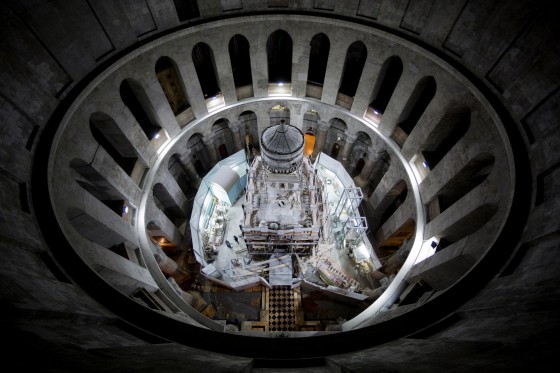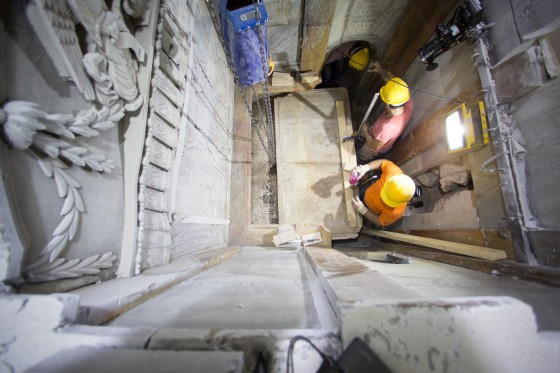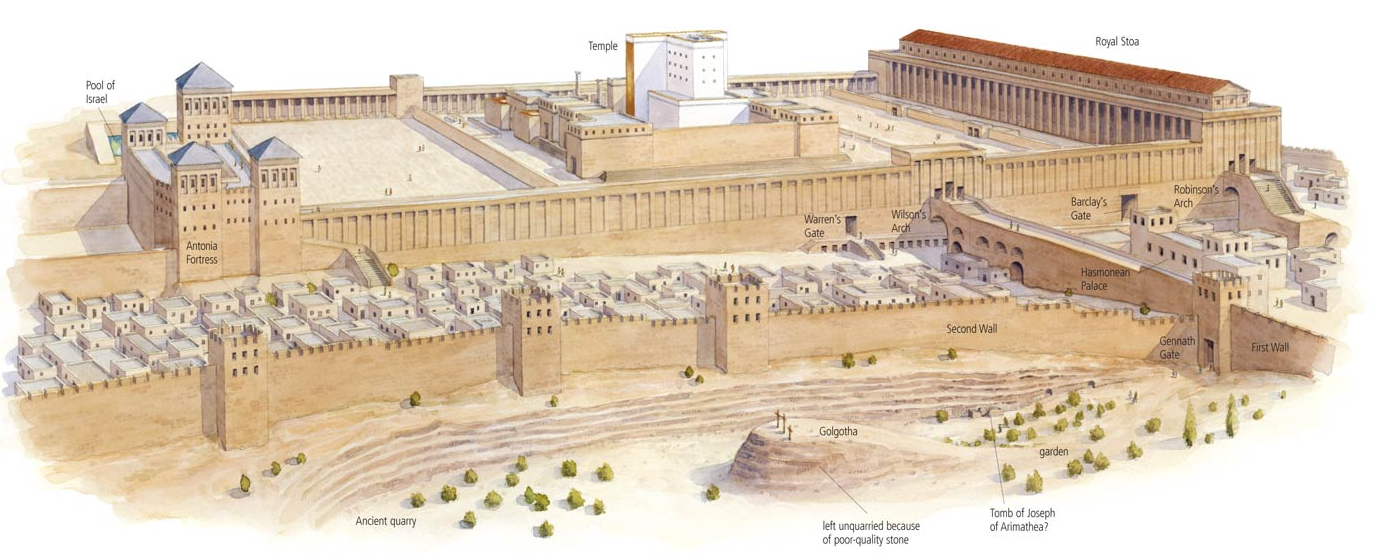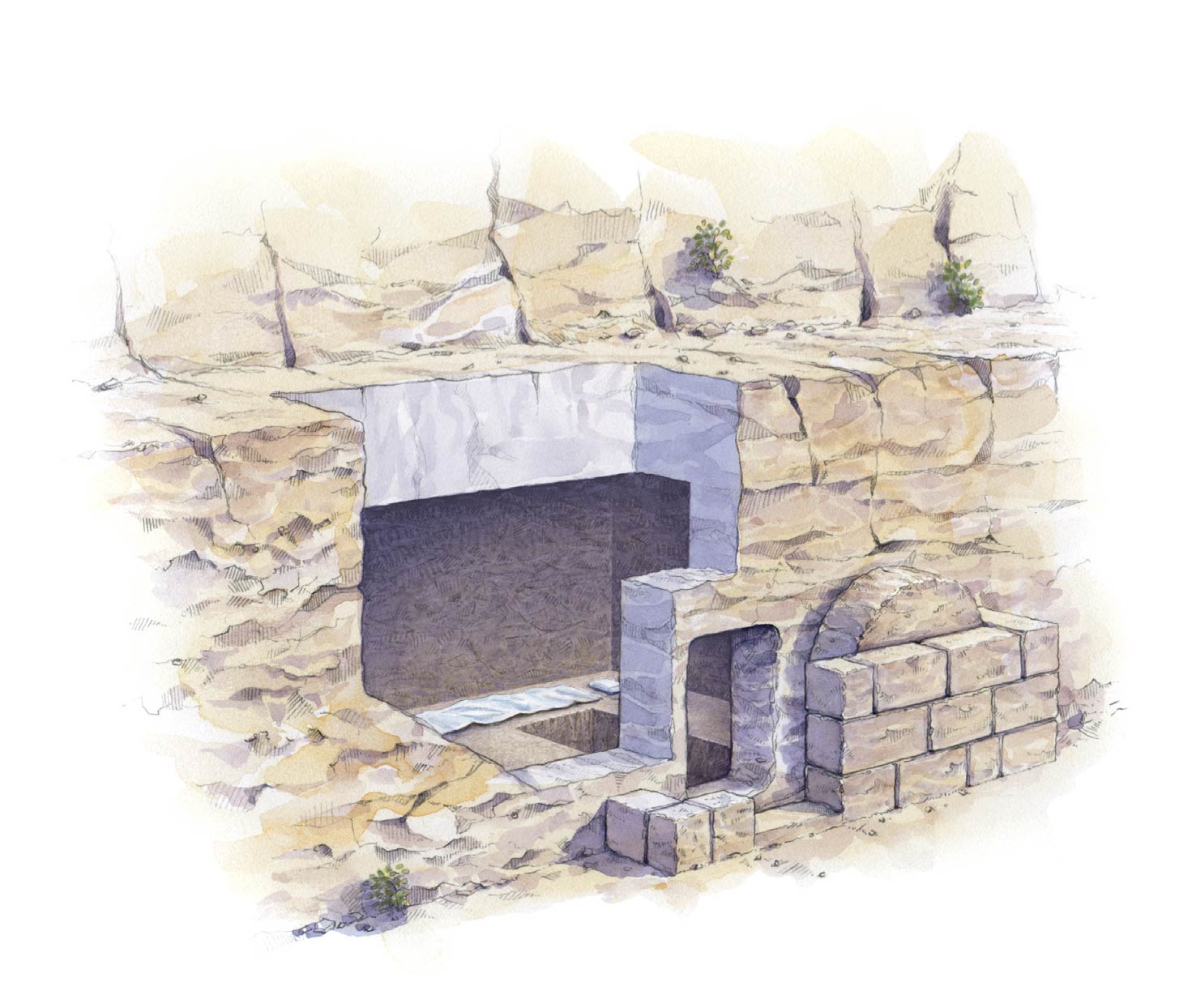
PHOTOGRAPH BY ODED BALILTY, AP FOR NATIONAL GEOGRAPHIC
Kristin Romey, writing for National Geographic, reports:
For the first time in centuries, scientists have exposed the original surface of what is traditionally considered the tomb of Jesus Christ. Located in the Church of the Holy Sepulchre in the Old City of Jerusalem, the tomb has been covered by marble cladding since at least 1555 A.D., and most likely centuries earlier.
“The marble covering of the tomb has been pulled back, and we were surprised by the amount of fill material beneath it,” said Fredrik Hiebert, archaeologist-in-residence at the National Geographic Society, a partner in the restoration project. “It will be a long scientific analysis, but we will finally be able to see the original rock surface on which, according to tradition, the body of Christ was laid.”
According to Christian tradition, the body of Jesus Christ was laid on a shelf or “burial bed” hewn from the side of a limestone cave following his crucifixion by the Romans in A.D. 30 or possibly 33. Christian belief says Christ was resurrected after death, and women who came to anoint his body three days after the burial reported that no remains were present.
This burial shelf is now enclosed by a small structure known as the Edicule (from the Latin aedicule, or “little house”), which was last reconstructed in 1808-1810 after being destroyed in a fire. The Edicule and the interior tomb are currently undergoing restoration by a team of scientists from the National Technical University of Athens, under the direction of Chief Scientific Supervisor Professor Antonia Moropoulou.
The exposure of the burial bed is giving researchers an unprecedented opportunity to study the original surface of what is considered the most sacred site in Christianity. An analysis of the original rock may enable them to better understand not only the original form of the tomb chamber, but also how it evolved as the focal point of veneration since it was first identified by Helena, mother of the Roman emperor Constantine, in A.D. 326.
“We are at the critical moment for rehabilitating the Edicule,” Moropoulou said. “The techniques we’re using to document this unique monument will enable the world to study our findings as if they themselves were in the tomb of Christ.”

PHOTOGRAPH BY DUSAN VRANIC, AP FOR NATIONAL GEOGRAPHIC
You can read the whole report here.
Readers might wonder, though, how we know this is really the place Jesus was buried. Don’t tourists visit the beautiful Garden Tomb as the real place where Jesus was buried? Which one is right? What does the Bible say? How about archaeology? Do we know what first-century tombs looked like? How big were these tombs?
Several years ago I served as the managing editor of the ESV Study Bible. One of the areas under my oversight was working with archaeological architects and reconstruction artists to assemble and present the relevant research and imagery that could help us to see (as much as possible) how the originals looked.
Toward that end, we hired archaeological architect Leen Ritmeyer, widely considered the world’s leading authority on Jerusalem’s Temple Mount. Ritmeyer was the chief architect of the Temple Mount excavations, which took place in Jerusalem after the Six-Day War of 1967. He served in a similar capacity in the Jewish Quarter excavations and also in the City of David excavations, producing important reconstruction drawings for all of them and for many other sites in Israel and Bible Lands. Using Ritmeyer’s extensive research and new drawings, we then turned to the illustration firm Maltings Partnership (in Derby, England) to produce the final, full-color paintings. We knew of Maltings’ superb work from their reconstruction drawings in the DK Travel Guides and the National Geographic Traveler guides.
I was able to ask Ritmeyer several questions about archaeology and the place of Jesus’s crucifixion and burial.
How do we know that the current site of the Church of the Holy Sepulcher is where Jesus originally died and was buried?
The Gospel record tells us that Golgotha (Aramaic for “Place of a Skull,”Matt. 27:33; Mark 15:22; John 19:17; cf. Luke 23:33; the Latin Vulgate translated it as “Calvary”) was located:
- outside but near the city walls of Jerusalem at that time (Heb. 13:12),
- near a main road (Mark 15:21, 29),
- in a garden (John 19:41a), where a new tomb had been made (Matt. 27:60; Luke 23:53; John 19:41b).

Copyright 2008 Crossway Bibles, www.esvstudybible.org
The site of the Church of the Holy Sepulcher certainly answers to these requirements. Although the church is located inside the walls of the Old City today, this was not the case in the first century A.D. At that time, this site was situated north of the First Wall and west of the Second Wall.
Substantial remains of the First Wall have been found in the Citadel and in the Jewish Quarter of the Old City of Jerusalem. In these latter excavations, the remains of the Gennath (Garden) Gate and the beginning of what is believed to be the Second Wall have been found, just where Josephus described them as being (cf. War 5.146).
The name “Garden Gate” indicates that a garden must have been located nearby. Excavations below the Church of the Holy Sepulcher and the Lutheran Church of the Redeemer have shown that this area used to be an ancient quarry, which was later abandoned. The excavators believe that the area was then filled with arable soil, presumably to turn the ugly quarry remains into a beautiful garden.
In one area, a rocky outcrop was left unquarried, because of the poor quality of the stone. It is believed that this hill was used to crucify criminals, although there are problems with the size of the rock offering enough space for three crosses.
Why do you think Golgotha was chosen as the site of the crucifixion in Jerusalem?
Golgotha was chosen by the Romans, not only for the punishment of criminals, but also as a deterring factor for the whole population. It was therefore located close to one of the major gateways into Jerusalem, the Gennath Gate, and along the busy biblical highway that ran from Shechem in the north to Hebron and Beersheba in the south. That the site was in full view of those traveling along that major road is indicated by Mark 15:29, which speaks of “those who passed by” the place of execution. There have been suggestions based on ancient documents that Golgotha may even have been closer to the Gennath Gate than the site of the Holy Sepulcher.
When was the site of the Holy Sepulcher built, and when was it first identified with the location of Golgotha?
In 313 A.D., the Emperor Constantine the Great published the Edict of Milan, which accepted Christianity as one of the state religions. Ten years later, in 323 A.D., his mother Queen Helena visited Jerusalem, and legend tells us that she discovered the cross of Jesus.
In 325 A.D., Constantine ordered the Church of the Holy Sepulcher to be built over a temple that the Roman emperor Hadrian had built to Aphrodite, but where, according to tradition, Jesus was buried.
In 1883, General Charles Gordon argued that the real Golgotha was located to the north of the Old City of Jerusalem in the Garden Tomb. Why do most archaeologists today reject that location as the place where Jesus was crucified and buried?
The Garden Tomb has been investigated by archaeologists, and it is well known today that this tomb was at least 600 years old when Christ died, and therefore could not have been the newly hewn, unused tomb described in the Gospels. However, the peaceful setting of the Garden Tomb is infinitely more conducive to meditation than the Church of the Holy Sepulcher.
The Gospels tell us that after the Romans confirmed that Jesus was dead, his body was taken to a garden and laid in Joseph of Arimathea’s newly hewn tomb (Matt. 27:60; Luke 23:53; John 19:41). Why is that information important for archaeologists?
The fact that the tomb was a new one is hugely significant for the way in which archaeologists would try to understand the tomb layout.
Tombs of the New Testament period usually consisted of several rock-cut chambers, which had burial and arched niches cut into the side walls. The first chamber was an entrance porch, while the other chambers had burial niches cut into the side walls for the burying of the dead.
But multiple chambers would contradict the description of the tomb of Jesus in the gospels, for the women involved with the burial could apparently see the body from outside the tomb (cf. Matt. 26:61; Luke 23:55). And John, while being outside the tomb and stooping to look inside, saw the linen grave clothes lying (John 20:5).
The truth of this description can now be confirmed by archaeology. More than 1,000 tombs have been studied around Jerusalem, and we know now that the first stage in tomb construction is the cutting out of a single chamber with benches arranged along the three sides, leaving a pit in the middle, so that the workmen could stand upright while working. A tomb could be left like this for a while, until the other chambers were added.
Such a newly hewn tomb could be used for the first phase of burial, the so-called “primary burial,” where the body was laid out on a bench. A year or so later, when only bones were left, these were placed in “ossuaries” or bone boxes. This was called “secondary burial.”
Other reconstructions of Jesus’ tomb show burial niches carved into the wall. Why are these lacking in the ESV Study Bible illustration?
The second phase in the development of a family tomb was the cutting out of a proper burial chamber. Such chambers had loculi (burial niches) where the body was put in. These niches were narrow and about 6 feet deep, so that a complete body could be put inside and the opening sealed off by a large stone. Higher up the wall, arched niches (arcosolia) were carved for the placing of the ossuaries. Once the tomb had reached this stage of construction, it could no longer be called a “newly hewn tomb.”
It would be wrong therefore to portray burial niches in the tomb of Joseph of Arimathea. The drawing of Jesus’s tomb in the ESV Study Bible accurately shows what a newly hewn tomb would have looked like.

Copyright 2008 Crossway Bibles, www.esvstudybible.org
Within the tomb, where did they probably place Jesus’s body?
The gospel record tells us that the body of Jesus could be seen as soon as someone looked inside the tomb (cf. John 20:5).
Newly hewn tombs usually had a bench running along three sides of the chamber. Looking inside a tomb, the first thing one would notice is the bench opposite the entrance. It is reasonable therefore to suggest that the body of Jesus was laid on the bench opposite the entrance. In the drawing, the grave clothes and head cloth (cf. John 20:5-7) can be seen on that bench, as an indication as to where Jesus’s body was laid. This arrangement makes it also possible for the two angels to sit on either side of the place where the body of Jesus had been (cf. John 20:12).
The Bible says that there was a massive rolling rock that sealed the tomb.
How big would such a rock have been?
Only a few of these rolling stones have been found. They usually have a diameter of 4.5 feet and were about 1 foot or so thick. Based on these measurements, the stone would have weighed a good few hundred kilos.
Were rolling stones typical of tombs in the first century?
Surprisingly, only very few tombs dating to the Second Temple period (c. 516 B.C.-A.D. 70) had rolling stones to close off the entrance. Actually, only four have been found in the Jerusalem area. The most well-known examples are the so-called Tomb of the Kings (more likely the Tomb of Queen Helena of Adiabene) and the Tomb of Herod’s Family. These were very elaborate tombs, built by wealthy people, as it is more expensive to build this kind of closing mechanism than just putting a blocking stone in front of the entrance.
It confirms the fact that Joseph of Arimathea was a wealthy man (cf. Matt. 27:57).
How big would the entrance to the tomb have been?
Tomb entrances, even those with rolling stones, were rather small, about 2.5 to 3 feet high and 2 to 2.5 feet wide.
There was no need to make the entrance larger as it was only used during burials. Smaller entrances are also easier to close off.
The fact that the disciples had to stoop to look in (Luke 24:12; John 20:5; John 20:11) is in perfect harmony with the archaeological record of tomb architecture of that time.

